Natural rubberNatural rubber is received by the coagulation of lacteal juice (latex) of rubber-bearing plants. Rubber can be accumulated in lacteal juice, in roots and stalks or in leaves and green tissues of young sprouts. Grassy latex rubber-bearing plants, the Compositae family, grow in the temperate zone, between 10 degrees on the both sides of the equator, and require warm damp climate and fertile soil. The area 1300 km wide on the both sides of the equator is known as «the rubber belt». The rubber-bearing plants growing beyond the rubber belt contain small amount of rubber in roots that is why they are of no industrial importance. The latex trees are of a great industrial importance. They accumulate rubber in large quantities and give it back easily. The most important tree is the Hevea Brasiliensis giving 96 % of world rubber production. The Hevea is grown in separate plantations and for 13 years (from 7 to 20) is used for manufacture of rubber. After that old trees are cut down and used for manufacture of furniture. Now the leaders of manufacture of rubber are Indonesia, Malaysia, Thailand and Ceylon. 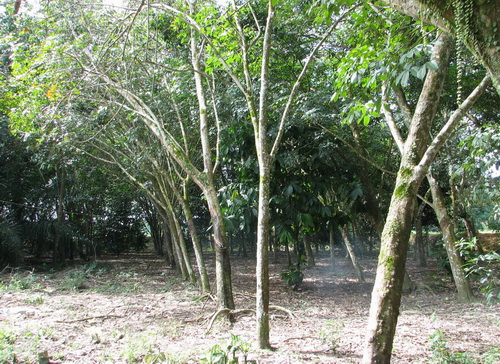
The juice of rubber tree is named «latex». Structure of latex: 65-70% of water, 25-30% of natural rubber, 1-2% of protein, 1% of mineral. 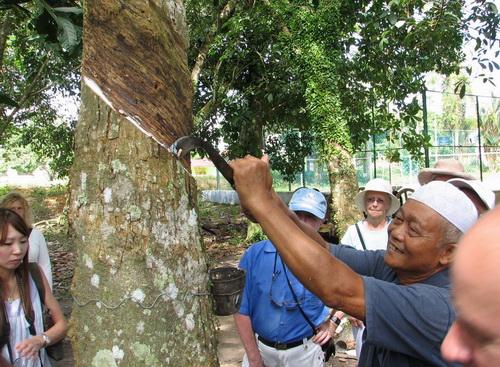
Latex is extracted by cutting out the V-shaped wedge in tree trunk. Latex is collected into the special tanks sized 45-60 gram each. 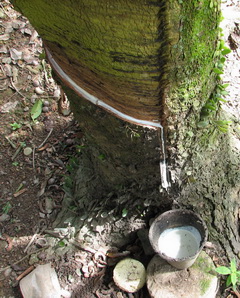
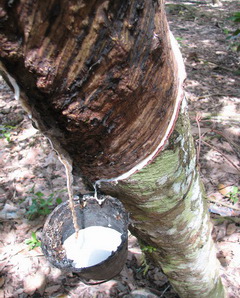
Then latex pours together to a tray where it is settled for a long time. 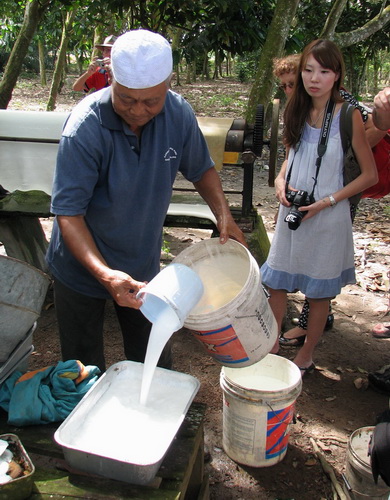
As a result latex becomes a strong viscouse rubber mass. 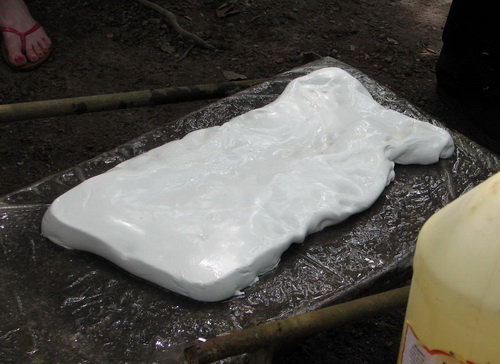
Then this mass is pressed out the water. 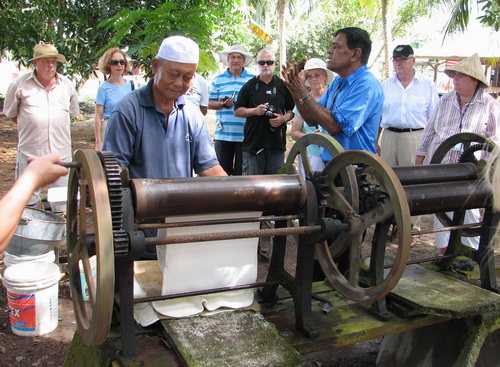 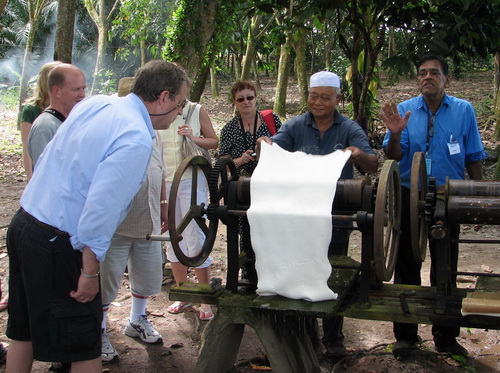
As a result the viscose rubber mass is cleared and pressed in briquettes which are dried up at heats. After that the mass gets darker (you can see it on the left). 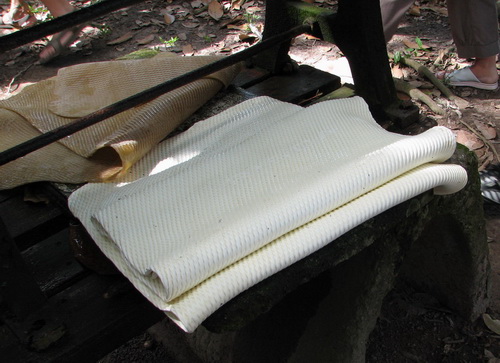
Since the end of XIX century the industry needs for rubber increased considerably therefore the new plantations of Hevea appeared, besides the Amazon forest. Young trees from South America were planted in Malaysia, Indonesia and on the Ceylon where they was perfectly accustomed and gave a big crop. Nowadays 30% of rubber made in the world is reaped in the plantations. The hectare of Hevea Brazilian plantations gives from 950 to 2000 kg rubber a year. Photos by A.Uritsk |
Related news site: |
 По-русски
По-русски